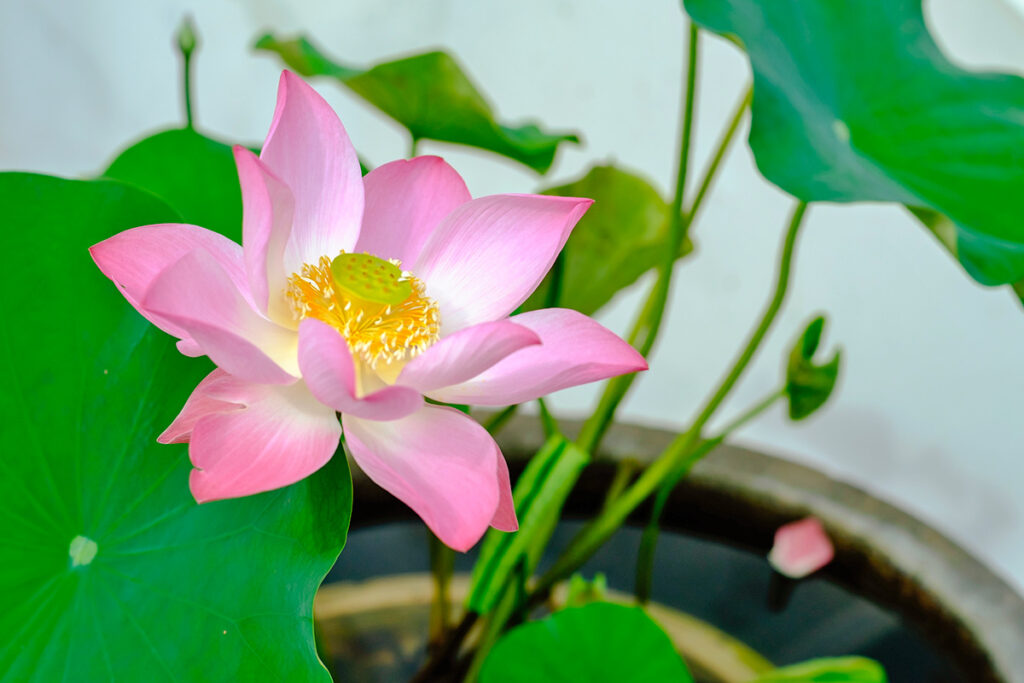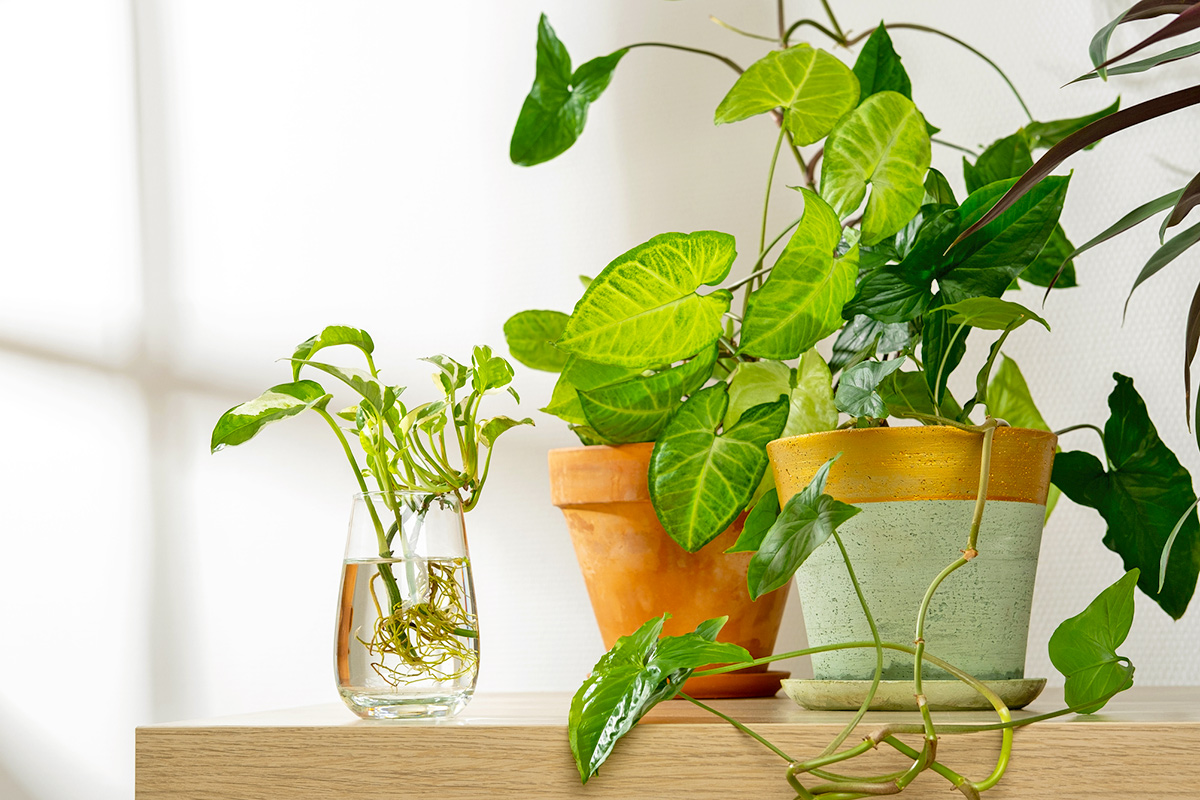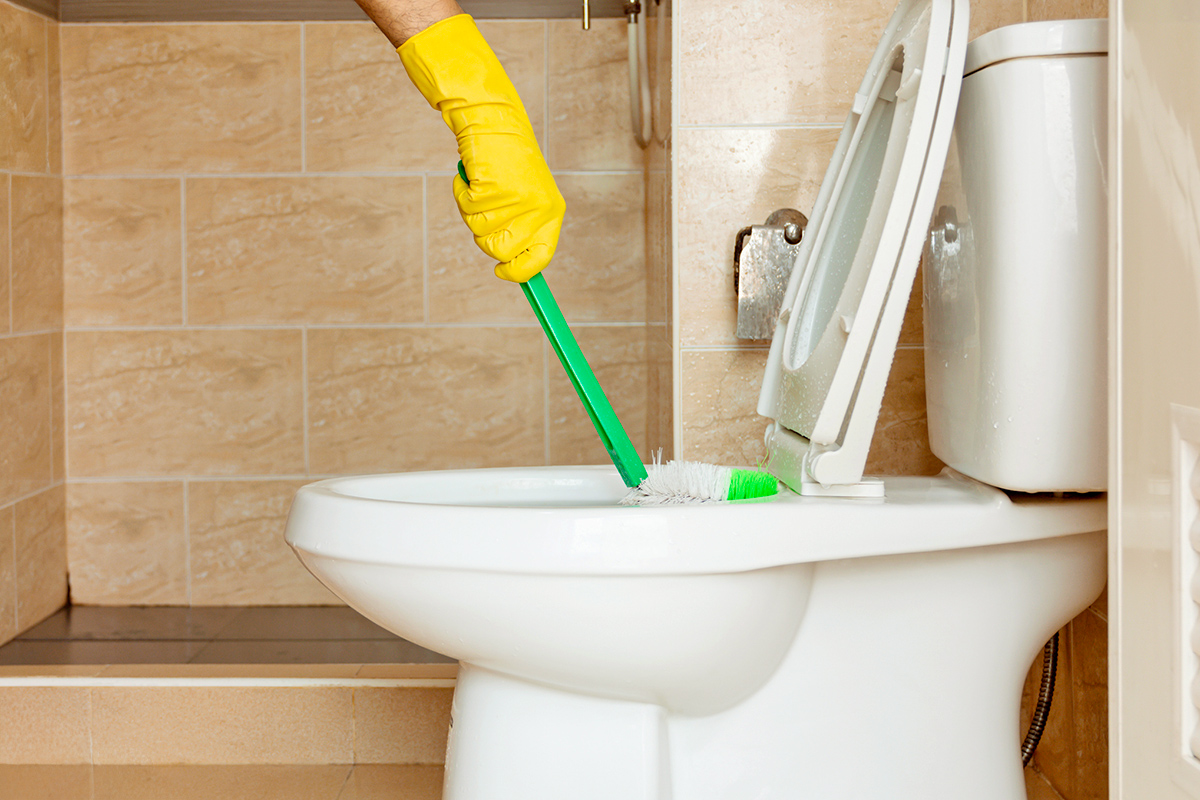Houseplants not only make a space feel brighter and fresher, but also offer a host of mental health benefits, such as improving mood, lowering stress levels, and heightening concentration. The challenge for many of us, though, is keeping them healthy. You can compensate by choosing low-maintenance plants or those that tolerate low-light conditions, if that’s…
Here’s a bold solution: Grow plants that flourish in plain water. This removes the risk of both under- and overwatering, and you’ll never have to worry about finding the right soil. Here are 10 of the best plants to grow in water, whether you’re looking to overcome a black thumb or simply display cuttings in a propagation station.
Water-Growing 101
While some plants are more tolerant of chlorine than others, all of the plants in this guide do best in nonchlorinated water. If you use well water, you’re good to go. If you’re on treated municipal water, you have a couple of options: Either let a pitcher of water sit overnight to allow the chlorine to evaporate, or, if necessary, use bottled water.
Growing plants in water isn’t the same as hydroponics, which is a more complex method using circulation systems and carefully calculated nutrient mixes. This guide focuses on using plain water, though we’ll note which plants occasionally benefit from a little fertilizer.
More from our network
House Outlook is part of Inbox Studio, which publishes content that uplifts, informs, and inspires.
1. Pothos (Epipremnum aureum)
Pothos (sometimes called “devil’s ivy”) is an excellent choice for anyone who struggles to keep houseplants alive. This lanky tropical vine has big, glossy, and dramatic foliage that comes in vivid green or variegated varieties, and it complements almost any decor. While it favors bright, indirect light, it can tolerate surprisingly low-light conditions. Pothos can feed itself adequately through photosynthesis, but it benefits from a splash of liquid fertilizer in its water once or twice a month during the summer.
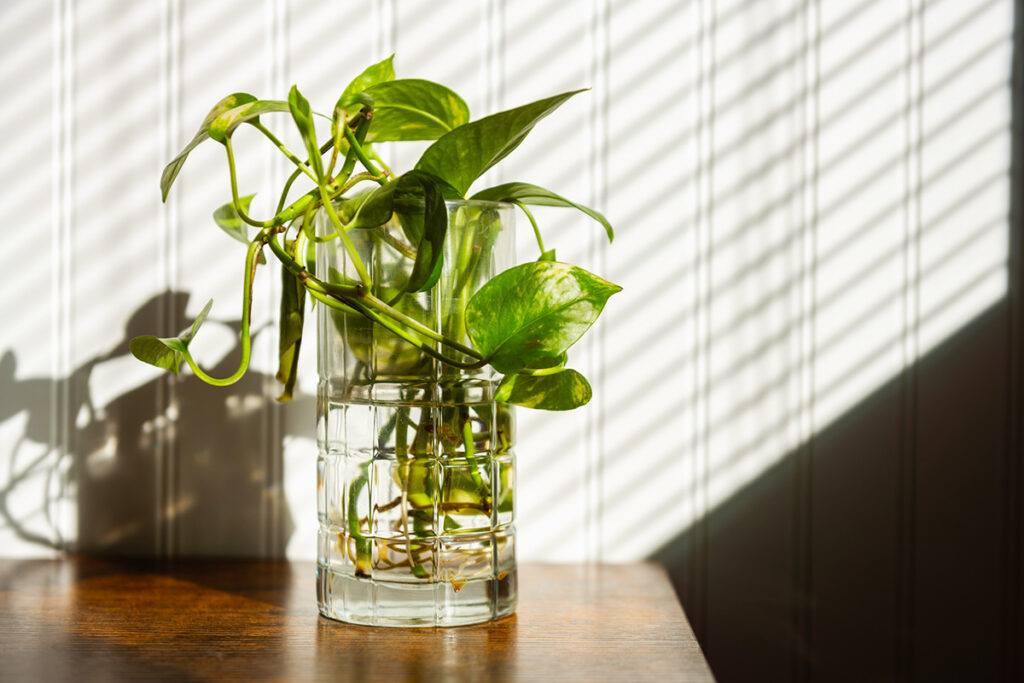
2. Lucky Bamboo (Dracaena sanderiana, D. braunii)
Despite its nickname, lucky bamboo isn’t a true bamboo; it’s actually a member of the Dracaena family, along with snake plants and corn plants. It gets along well enough in water that it’s sometimes called “water bamboo,” and it is often sold in decorative vases, usually with three stems bundled together and stones or gravel at the bottom for the roots to wrap around. Plants grown this way won’t become as large and vigorous as those grown in soil, but they’ll do just fine as long as you change the water weekly. They don’t need much besides water, though a bit of 2-2-2 water-soluble fertilizer every three months will help them thrive.
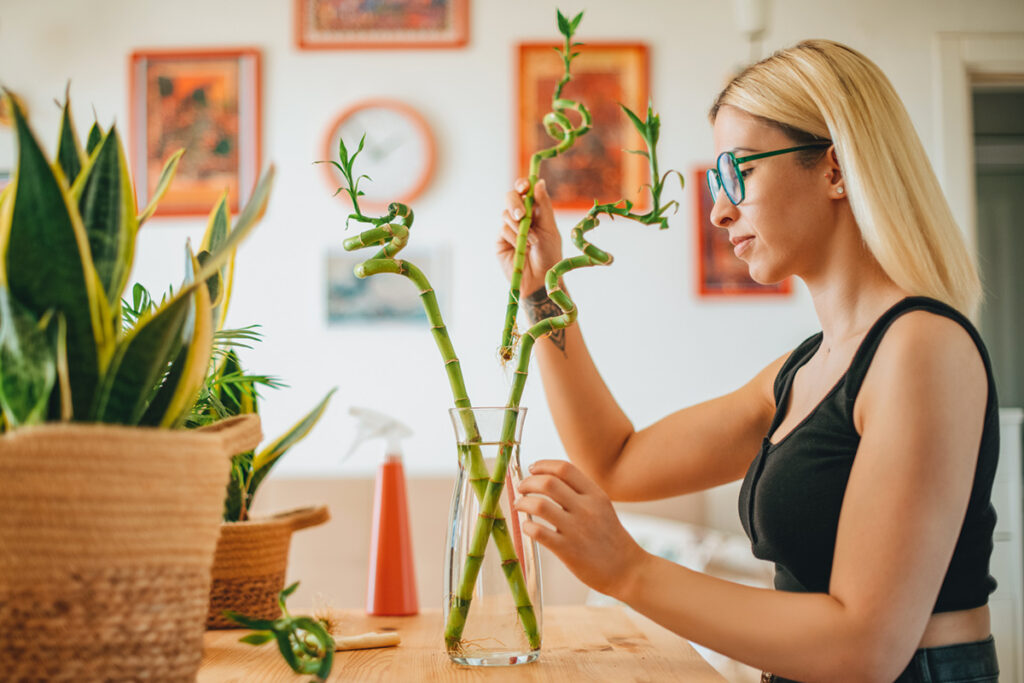


3. Coleus (Coleus scutellarioides)
Coleus is a forgiving plant for novices because it doesn’t need much care, and its dramatic foliage is beautiful year-round. The plant is also easy to propagate, rooting quickly in a glass of water.
To get started, take cuttings from healthy stems, strip off any lower leaves that would be underwater, and your plant will take care of the rest. When a stem gets too tall for your bowl or vase, snip the growing tip just above a pair of leaves; it will eventually fork and become bushier. The piece you’ve snipped can go right into the water to root and form a new stem. Note: Coleus won’t grow indefinitely in water and will eventually need to be potted or discarded. However, keeping the stems in water for a few months is a great way to add a splash of color to your space.

4. Chinese Money Plant (Pilea peperomioides)
Pilea gets its name from its flat, coinlike leaves, which also earned it the nickname “pancake plant.” Similar to coleus, it won’t last forever in water, but if you’re already planning to propagate some cuttings, you can use them as decorative water plants for months before potting. Transparent vases with a small opening are a good choice, as they support the plant’s stem while showing off its natural beauty. Pilea prefers bright, indirect sunlight and benefits from a light application of a balanced fertilizer every month or so during the spring and summer.
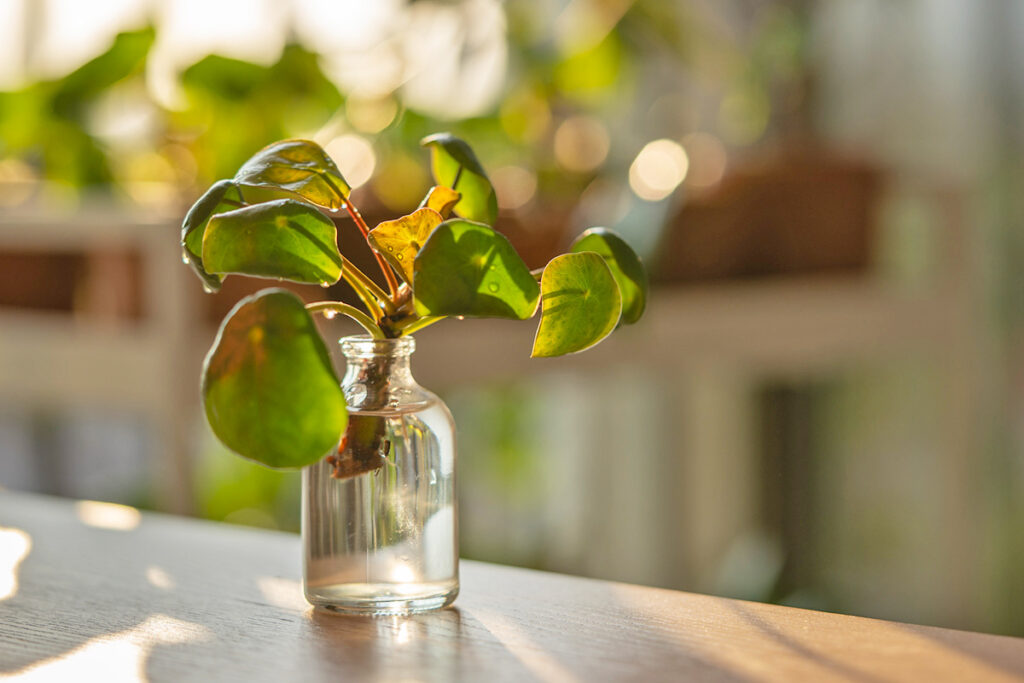
5. Spider Plant (Chlorophytum comosum)
Spider plants are one of the most beloved houseplants, not because they are particularly beautiful, but because they are so forgiving. The plant frequently produces runners with baby plantlets (also called “spiderettes”), which are perfect for growing in water. Give the plantlets a shallow bowl or vase with some pebbles or gravel for the roots to wrap around, and they will be happy.
Change the water every week or so. If your water is “hard” and full of minerals, you may also need to periodically rinse the roots. Fertilize them lightly with a diluted, balanced fertilizer every month or two during the spring and summer. Spider plants can live in water for several months, though they will only reach their full potential when they are potted in soil.
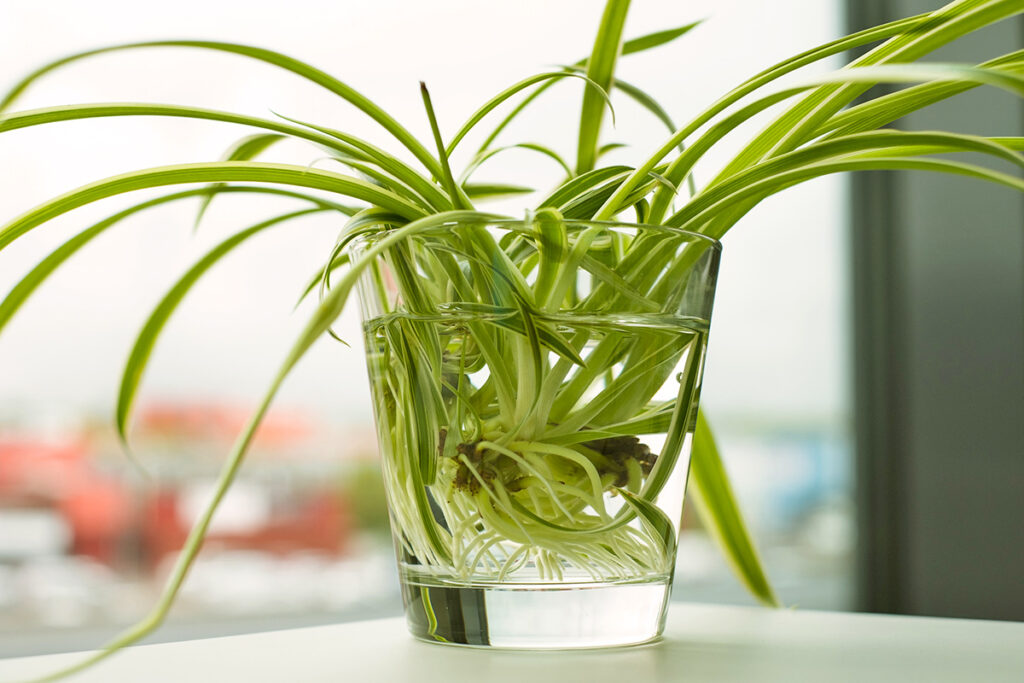
6. Baby’s Tears (Soleirolia soleirolii)
Baby’s tears is a fun little plant that produces a thick mat of greenery. You can start it in water from a cutting, but it’s often easiest to divide an existing plant. Just add both the stems and leaves to a bowl-type vase, leaving room for it to spread. It flourishes best in low to moderate light, and you will need to change its water every week.
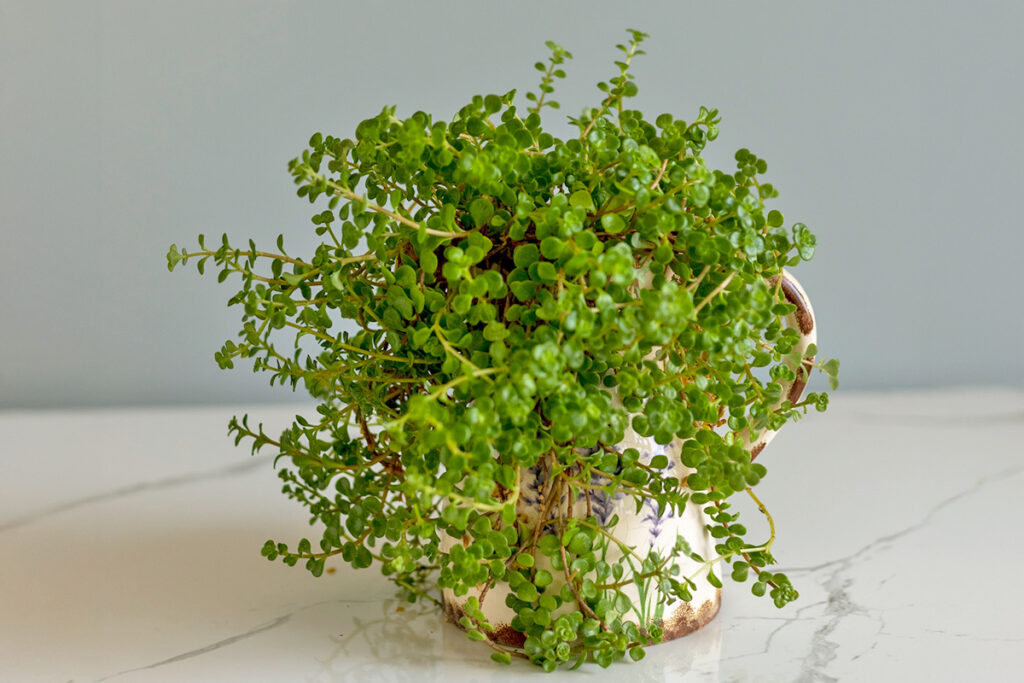
7. Begonias (Begonia spp.)
Plants that are easy to propagate from cuttings are prime candidates for growing in water, and this includes begonias, which may be surprising given how prone they are to root rot. Have you ever noticed how bumpy a begonia’s stem is? Well, those bumps will all turn into roots once the stem is in water. It’s not a fast process — in fact, it can take months for the roots to reach full size — but it’s fun to watch. For this method, you’ll want to use wax or rex begonias, as tuberous varieties prefer soil.
Choose a clear vase or bowl with a narrow opening to keep the stem’s leaves out of the water. Place it in bright, indirect light and change the water at least once a week to prevent algae development. Begonias can live indefinitely in water, or you can repot them into soil.
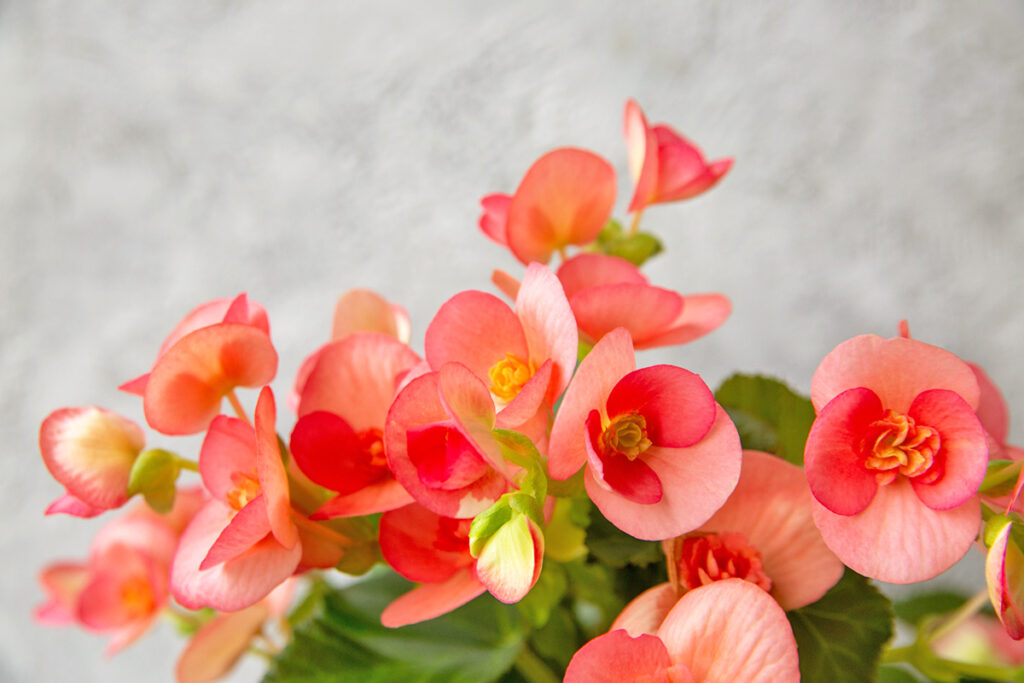
8. Impatiens (Impatiens spp.)
Impatiens are colorful and popular garden plants, and transferring a few cuttings to water is an easy way to bring that color indoors. Most varieties you’ll find at your local nursery are I. walleriana or I. hawkeri (New Guinea impatiens), with the New Guinea type faring better in water. Choose healthy stems, about 4 to 6 inches long, and cut them just below a leaf node — the bump on the stem where new roots will grow. Pop them into a vase or glass jar with the leaves out of the water. They need lots of bright, indirect light, so if the stems become leggy or the leaves turn yellow, you’ll need to find a sunnier spot.
Change the water weekly, and snip off any mushy roots. Light fertilizer every few weeks will help encourage blooming, but if the leaves turn yellow, you’ve used too much. If that happens, simply replace the water.

9. Spiderwort (Tradescantia spp.)
With dozens of varieties available, the best known being “Wandering Dude,” spiderwort is a vining plant with foliage variegated in shades of green, yellow, pink, and purple. To grow it in water, take cuttings with at least four or five leaves and a couple of leaf nodes, and find them a pretty jar or vase to live in. (Remember to wear gloves, as tradescantia can irritate your skin.) Change the water every week and remove any rotting roots.
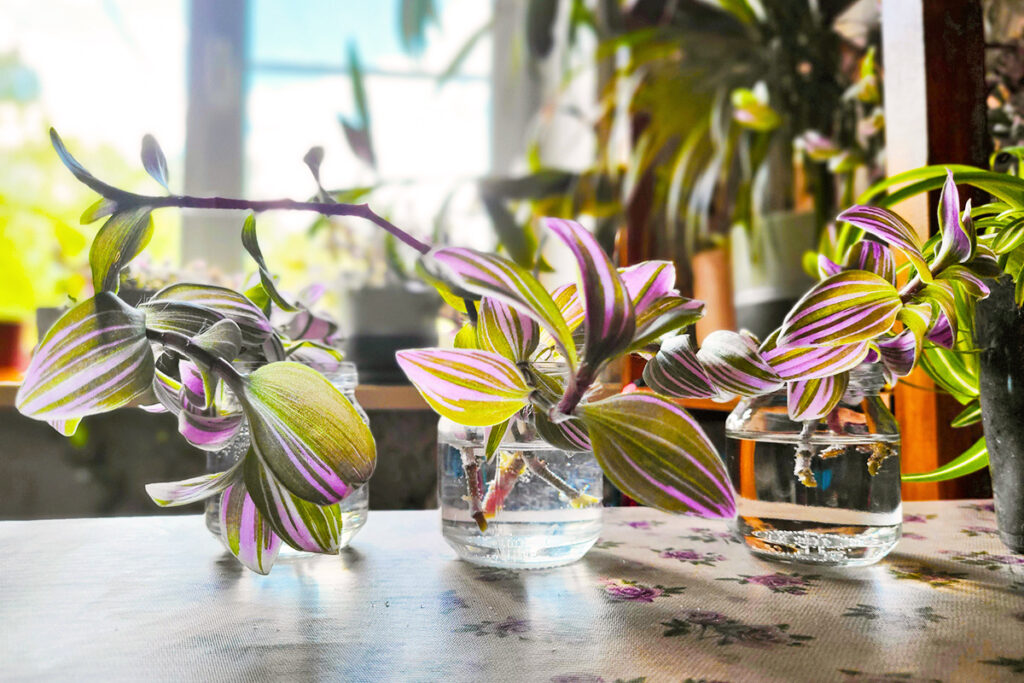
10. Dwarf Lotus (Nelumbo nucifera)
No list of plants that grow in water would be complete without at least one actual aquatic plant, and dwarf lotus (aka “bowl lotus” or “bonsai lotus”) is a really pleasing one. Despite the name, these are fairly large plants, and their blossoms can grow up to 5 inches across, depending on the variety. While they can be grown successfully in relatively compact containers, bowls up to 1 foot wide and 1 foot deep give them more room to flourish. It’s also best to use a dark-colored, opaque bowl to prevent algae growth.
Unlike the other plants in this roundup, dwarf lotus does not grow in plain water. It needs a layer of soil at the bottom of the bowl, topped with a layer of gravel to keep the soil from muddying the water. Fill the rest of the bowl with water and put it in a spot where it will get direct sunlight. Since you typically grow these from seed, rather than cuttings, you can choose the exact size and blossom color that suits your space best.
